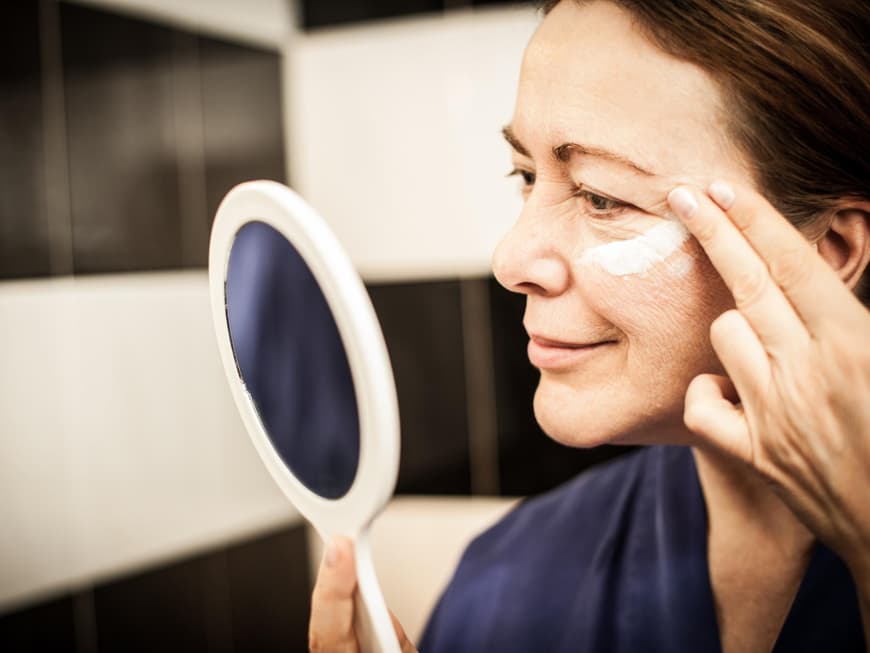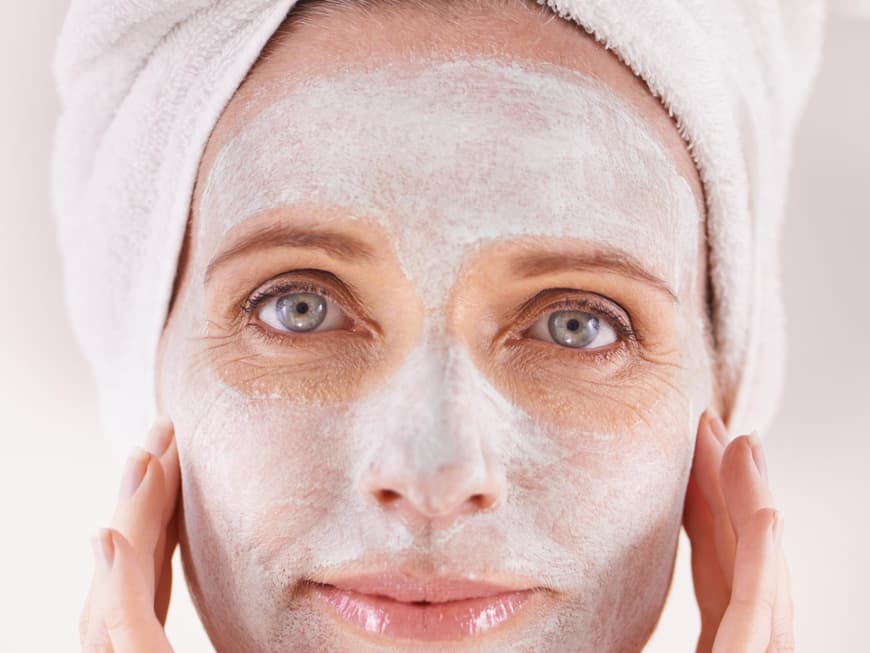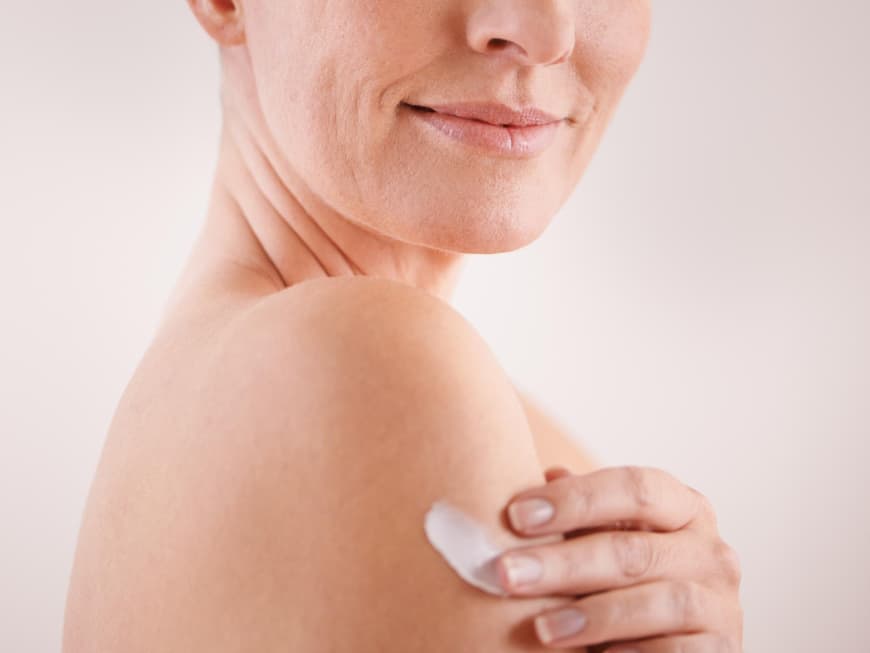First signs
It starts earlier than expected
Menopause? Doesn't affect me! This is probably what many women in their early to mid-40s think, but it's something that only women in their 60s have to deal with. However, the transition phase begins on average at the age of 47.5, which means that quite a few women are already affected before then. An irregular menstrual cycle is the first, very reliable sign of this. However, women often blame this on too much stress at work or trouble in the family. The same applies to sleep irregularities, mood swings and drier skin with initial feelings of tightness. These consequences for the body and the complexion are caused by the incipient decline in hormones such as oestrogen and progesterone. Hormonal ageing begins.
Right in the middle
What happens to the skin during the menopause
During the menopause, the skin becomes thinner, drier and more sensitive, so we literally become "thinner-skinned", and it also loses volume and firmness. Elastin and collagen production in the cells decreases. Small wrinkles become deeper wrinkles, the face loses contour ("sagging") as the epidermis loses its grip on the dermis, the complexion appears paler and less radiant. This is also due to reduced sebum production, which goes hand in hand with the decline in hormones. In addition, hormonal changes often lead to pigmentation spots and melanin shifts. Thanks to the right skin care, however, it is possible to take good care of the skin during the menopause, plumping it up (with ingredients such as hyaluronic acid) and counteracting unevenness (with lightening vitamin C). If you have trouble sleeping at night due to heat attacks, cooling creams (such as "Neovadiol Night" from Vichy with a cooling effect) can also be very effective in counteracting this.
What happens afterwards
You should expect this
From around your mid-60s, your complexion will appear slightly duller. This is because the epidermis thickens, as cell division in the skin slows down overall during the menopause and blood circulation decreases. The result? Dead skin cells on the surface look like a gray haze. The solution: regular exfoliation of the skin, whether mechanical (e.g. with micro-fine ground fruit seeds) or enzymatic (creams with pineapple or papaya enzymes) or with fruit acids. This gently exfoliates the top layer of skin, revealing fresh skin. New creams with delicate rosé-colored mineral pigments can help to give the skin a rosy, youthful appearance during the menopause. The skin radiates vitality and energy again.
A few more tips
For an all-round feeling of well-being
Hormone replacement therapies - seek advice from your gynecologist - or herbal medicines with active ingredients such as Siberian rhubarb (pharmacy) can help to combat unwanted side effects such as hot flushes, sleep disorders, mood swings or even depressive episodes (after all, two thirds of all menopausal women in Germany - and that's 15 million - suffer from one or more of these symptoms to varying degrees of intensity). It is also helpful to reduce caffeine and alcohol-containing drinks and spicy foods and to follow the "onion principle" when it comes to clothing, i.e. to wear a cardigan over a top that can be easily removed if necessary. Targeted, regular relaxation training, for example with mindfulness-based stress reduction, yoga or autogenic training, also promotes a calm approach to the overall situation and literally ensures a much-desired "cooler head".



